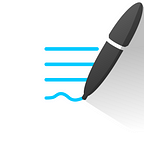Going paperless as an interior designer — Interview with Autumn from Fuchsia Design
Read how Autumn, an interior designer from the USA, uses the note-taking app GoodNotes to sketch her ideas, share plans with her employees, or write down meeting minutes to create wonderful homes for her clients.
Tell us a little bit about yourself and your work.
I own Fuchsia Design, a full service residential interior design firm. My background is interior design and construction management. We assist clients with large renovations or new construction projects from beginning to end where our involvement begins with the architectural plans, and we work our way through electrical plans, plumbing plans, custom cabinetry drawings, interior selections, and furnishings.
What are you passionate about?
I’m passionate about getting to know my clients. There’s a lot that goes into ensuring a home ‘works’ in a way that is perfectly suited towards our clients’ lifestyles. Learning about who my client is, what their interests are, how they live in their home, and how they spend their time helps me to incorporate that information into their home. My job is a personal one. I’m creating the spaces that families live in — where they drink their morning coffee… open presents on Christmas morning… gather for family meals… My clients hire me to ensure that their homes are not only great but extraordinary, and I’m passionate about making sure they are.
What do you love about being an interior designer?
I love being able to incorporate creativity into my every day job while still being technical and detailed. I feel very fulfilled when I’m able to sit down and design custom cabinetry or design the finishes and fabrics in a space. I love that residential design has so much creative freedom, but that I’m also able to incorporate really technical aspects into it. A lot of people don’t realize how detail oriented one must be in order to execute a design for a home. Fuchsia Design produces pages and pages of specifications, schedules, and elevations, so that there is never a question of how to build or install what it is that we’ve designed. GoodNotes is an important tool in that process.
When and how did you discover GoodNotes?
I was a week into working for my first design firm, and I had already filled up an entire notebook with notes. I knew it wasn’t a good solution long term because I would have at least 52 notebooks a year to keep track of. I purchased an iPad and downloaded every note taking app I could find. I tested each one until I found one that was perfectly suited for me. That app was GoodNotes. I’ve been using it at least 5 days a week ever since, and I can’t imagine my life without it. That was four years ago.
How do you use GoodNotes for work and which advantages does it bring?
I use GoodNotes for nearly EVERYTHING. Within each client notebook, I important a .pdf copy of their construction plans which I often use to draw out electrical plans, flooring/paint diagrams, etc. I also use it to take notes in each meeting which are also stored in that client’s notebook. During client meetings, it allows me to quickly draw my ideas so clients can envision what I am talking about. For my employees, when they send me AutoCAD drawings or sketchup models, I import the photos and draw revisions right on top. Then, I can just select those pages and export them as a .pdf to email back to them with feedback! Two of my team members work remotely so it’s incredibly helpful to have a tool that allows me to share/email ideas without having to scan in actual drawings.
The graph paper is an awesome tool to helping me sketch to scale. I will often open the architect’s floor plan in a notebook and trace a room so that I can copy and paste it onto graph paper and quickly have a perfectly sketched room to scale. I also often sketch out a room in 3D before having my team member build it in sketchup, so she knows what I have in mind. I’ve attached an example of a sketch I did along with the sketchup model to show how it communicated my ideas to my team.
In which way do you organize your notes?
Each client gets their own notebook. All current clients are under the “Current Clients” category and all completed projects are archived under the “Completed” category, so I can still access them if I need to, but they don’t crowd my other notebooks which ensures my current projects are easy to navigate.
